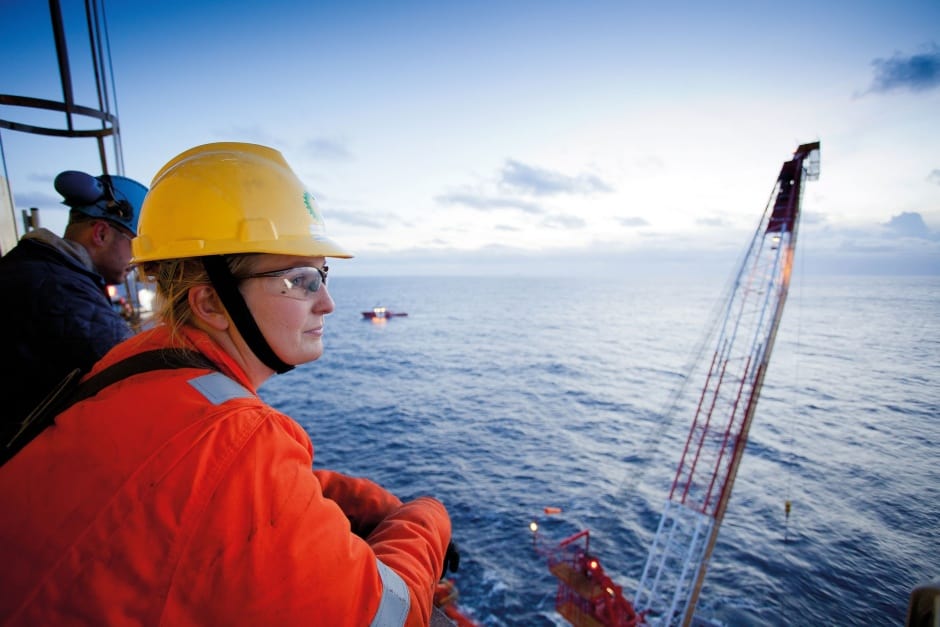As we celebrate International Women’s Day and the #PressforProgress campaign comes to life, we do so in the knowledge that industries such as energy and engineering have inherently been dominated by white, middle class men. We can’t hide that. We don’t intend to, and nor should we. And we need to change it.
Some of the industry statistics are quite shocking. A recent coalition of the UK’s biggest technical employers, including BP, BAE, Rolls-Royce and Shell acknowledged that “we must address a lack of diversity in a workforce that is currently 92pc male and 94pc white”.[1>

At the same time, we should also appreciate that times are changing, and progress – to an extent - has and continues to be made. At my employer, BP, we set ourselves a goal for female representation back in 2011 – 25% women group leaders and 30% women senior level leaders by 2020. We’re not there yet, but we are well on the road to achieving this. Back in 1990 we had virtually no women in our group leadership. By the millennium that figure stood at 9% and in 2017 it had risen to 21%.
This is good progress, but we still have a lot of work to do.
One of the biggest challenges we face is the pool from which we recruit. Globally the number of males graduating from university with the technical skills companies like mine need is much higher when compared to females. In the UK, just 15% of engineering graduates are female[2>. There are multiple reasons for this, from societal stereotypes through to a lack of role models. Across the globe, a huge number of initiatives are in place to address this imbalance and most of the major international employers are playing a critical role.
But beyond encouraging more young girls into the system, we also need to ensure that the female graduates we recruit today stay in the industry and progress through to leadership positions tomorrow. In fact, that’s true of all professions. Doing this will not only provide role models but will also help combat the much publicised gender pay gap as it will ensure more females progress into senior roles that are well remunerated.
I believe one of the solutions is to ensure females maintain their career aspirations and ambitions. A drop off in ambition and aspiration is a real problem, and a number of surveys and research papers have highlighted this.
For example, Bain & Company found that, despite being equally aspirational and confident in their ability to reach top management at the start of their careers, women’s aspiration levels drop by 60% and their confidence by 50% after just two years into their career, while men’s levels stay the same. At BP we have also looked into this and our recent study – Spot the Difference – identified the same trend, albeit at a significantly reduced percentage. In our survey, males were 5% more likely to agree that their level of ambition had not changed since the beginning of their career when compared with their female counterparts.
It is obvious to me that, if we are going to increase female representation at senior levels and overcome the gender pay gap, we need to put a halt on these declines in aspirations, ambitions and confidence.
Women’s aspiration levels drop by 60% and their confidence by 50% after just two years into their career, while men’s levels stay the same
To do that we need to collectively encourage and facilitate a supportive working environment.
Both employers and employees have a shared responsibility here. Individuals need to understand how their strengths and development potential is viewed by both their peers and seniors. And employers need a systematic, thorough and consistent approach to how they manage people through their careers.
At lot of it starts with being honest with each other. When I think back on my own career, there were a number of critical interventions when those I trusted helped challenge my thinking on whether I could do different roles, whether I was ‘ready’ for the next level up and how transferable my skills actually were. I wouldn’t be in the role I am today without those challenges and that collective support.
Sometimes these are referred to as ‘hinge moments’. As employers we need to find a way for everyone to feel empowered and excited about continuing to learn, develop and contribute in an ever changing workplace.
Whilst we have come a long way, only by having employers and employees work together will we really ensure progress continues to be made.
[1> http://www.telegraph.co.uk/business/2018/01/21/engineering-giants-pledge-attract-diverse-staff/





Red Bull makes hydrogen fuel cell play with AVL
Formula 1 is an anachronistic anomaly where its only cutting edge is in engine development. The rules prohibit any real innovation and there would be...